The chapter described in the following post is part of a very graphical powerpoint presentation on soil microbiology. This presentation is freely available at the Helmholtz-Centre for Environmental Research (UFZ) in Leipzig, Germany.
Chapter 2 is about the provision of organic material (containing reduced carbon) to soil organisms. There are two ways, how plant derived carbon enters the soil: Either in the form of leaf litter (or other plant stuff falling down to the floor) or via the plant root.
Usually leaf litter is quickly degraded resulting in the liberation of various mineral nutrients incorporated in this litter and in the formation of certain remnants (humic acids) important for humus formation. Only when conditions are too humid, too arid, or too cold, leaf litter is hardly degraded. This leads then a) to the accumulation of leaf litter on soil surfaces (under dry conditions this may be the basis for regular wildfire, under humid conditions this may lead to bog formation) and b) to a serious scarcity of mineral nutrients which are captured within the undegraded material.
- Litter degradation
Roots are another important way for plant carbon into the soil, either in form of root exudates or of senescent parts of the roots. The following images will demonstrate that root systems can be very diverse. This diversity is responsible for at least a part of the diversity of soil microorganisms.
- Root systems
The image above gives root systems of different function and architecture. In the forground there are two main root systems (left and middle, dominated by the main root) and one lateral root system (right, dominated by lateral roots and typical, e.g., for grasses). In the background there is a tree root system, with completely different texture and color when compared to the herbal systems from the foreground, indicating differences in chemical composition.
There may be functional diversity, however, even within individual root systems, since nutrient uptake (including root exudates production) often is located close to the root tip (yellow color in the following image), while the more distal root sections are rather engaged in transport processes (red color).
- Root functions
Due to the importance in nutrient uptake, the zone shortly behind the root tip is characterized by a strong production of root exudates and the presence of many root hair.

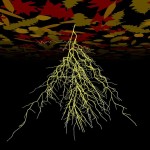
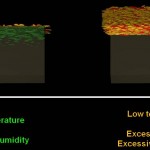
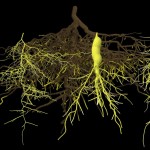
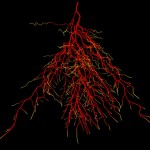
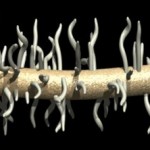
Pingback: realitky – The Mole and Residential Pest Control Las Vegas and Pest control Austin | Structured Settlement